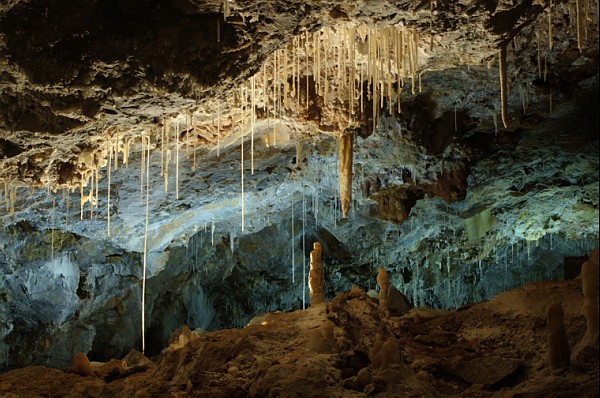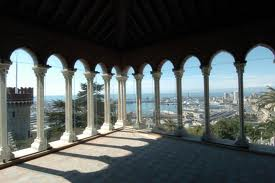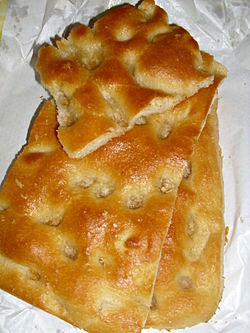On the Road
The best way to get to almost any town in Liguria is by train. Genoa even has its own little tourist train, Trenino Pippetto, that winds its way through the streets of the old city, and an old train that heads into the mountains to Casella which seems straight out of a cowboy movie. You can also take boats to do a tour of the Port of Genoa, an excursion to the Gulf of Tigullio (stopping in Portofino and San Fruttuoso), reach the Cinque Terre, or go whale-watching in the Whale Sanctuary between Genoa and Imperia.
Cycling is a good way to see the western coast of the Riviera – there are 24 km. along the sea between Ospedaletti and San Lorenzo al Mare, but you can also pedal from Cogoleto to Arenzano. Cable cars abound in Genoa. They pass through long tunnels to break into the light on top of the steep hills at Righi. Public elevators take you to the upper city (Castelletto), and there is even an elevator-train (ascensore di Montegalletto) that goes into the mountain and then up 26 floors to reach the castle, Castello D’Albertis. Rapallo also has a cable car with a spectacular panoramic view that goes to the Santuario di Montallegro. Trails at the top lead out into the woods of the Apennines.
Sea or Mountains?
The more isolated beaches and bays of the Riviera can be reached by paths and stairways. Children enjoy going down to the r ocks or boulders on the sea to dive, swim and snorkel, just make sure they wear appropriate footwear. There are also some interesting routes that can be taken through Regional Parks, for example, on Portofino from the Church of San Rocco to the point, Punta Chiappa, or the marvelous sea promenade, the Via dell’Amore in the Cinque Terre from Riomaggiore to Manarola, taking a dip at the final destination. Equally beautiful is the walk from the Piazzetta in Portofino to the light house. Children also will like “The Magic Flute” set-up in the park in Santa Margherita Ligure, made by famous illustrator, Lele Luzzati.
ocks or boulders on the sea to dive, swim and snorkel, just make sure they wear appropriate footwear. There are also some interesting routes that can be taken through Regional Parks, for example, on Portofino from the Church of San Rocco to the point, Punta Chiappa, or the marvelous sea promenade, the Via dell’Amore in the Cinque Terre from Riomaggiore to Manarola, taking a dip at the final destination. Equally beautiful is the walk from the Piazzetta in Portofino to the light house. Children also will like “The Magic Flute” set-up in the park in Santa Margherita Ligure, made by famous illustrator, Lele Luzzati.
The Apennine Mountains are also rich in fun things to do. Don’t miss the castles. Here we will suggest two of them: the Castello della Pietra in Vobbia, in the Park of the Antola – which is squeezed in between two rocky spurs, and the castle in Campo Ligure, where you can also visit the Museum of Filigree – with an unusual collection of gold and silver, and the mechanized Christmas crèche which children love – it’s beautiful, and has antique figures which move, with a backdrop that shows the valley near the Oratory of the Saints Sebastiano and Rocco.
Then there are caves. Toirano is absolutely fascinating, with cave bear bones, and underwater formations (the water has been drained). You can reach it from highway exit Borghetto Santo Spirito. Adults will enjoy a meal in the medieval village of Toirano and a visit to the Ethnographic Museum in the Val Varatella.
And quarries. The valley of Fontanabuona (behind Chiavari) holds the “Via dell’Ardesia”, the Slate Road. There is a museum, and you can also visit a quarry. Val Graveglia, instead, in the Regional Park of the Aveto, has an ancient mine, the Antica Miniera di Gambatesa, where, after donning a helmet and a cape, a miners’ train takes you underground.
In Search of Adventure
Adventure routes in Genoa (Righi) or Borzonasca, in the Indian Forest of Belpiano: 5 years and up. Vines, rope bridges, pulleys: trees to move in and climb, in a real forest.
Aquatic Park, “Le Caravelle” for young and old, opens in June for the whole summer with water slides, swimming pools, and lots and lots of shows. Special prices for groups.
For an amazing natural spectacle, with mountains blanketed white with flowers, walk from Sant’Alberto di Bargagli to Torriglia when the narcissus are blooming. For a fun Christmas spectacle, go to Pentema, where the whole village becomes a living crèche at Christmastime. There are peasants, carrying out their chores; and artisans, carrying out their trades; and animals, filling the manger, (it can be seen from Christmas Eve to Epiphany, and Saturdays and Sundays from mid-December to the end of January).
For those who love theatre, Apricale in western Liguria becomes an open air theatre in August, when this medieval village hosts the Teatro della Tosse’s imaginative spectacles with scenery by famous illustrator, Lele Luzzati.
Festivals, Events, and Christmas Crèches
Liguria has festivals and events to propose throughout the whole year. All cities, villages, and towns celebrate Carnival and their patron saints (with picturesque processions), along with events like the arrival of spring, the festival of the flowers, ancient boat races, or special historic moments.
La Spezia’s “Palio del Golfo” ancient boat race has been held for 87 years on the first Sunday of August. 13 boats, one for each of the city’s 13 quarters, compete against each other in a race that is loved by the locals, and filled with collateral events, shows, and exhibitions.
An event expressly dedicated to children along with games, readings, culture, and literature, is the “Festival Andersen”, which takes place every year between May and June in Sestri Levante. The whole city gets involved for four or five days of shows, games, and events for young and old at international levels.
Particular attention should be paid to the Christmas season, when children can enjoy Liguria’s vast assortment of beautiful and characteristic Christmas crèches. To name a few churches with fascinating crèches, there is the Church of San Barnaba on Piazza San Barnaba; the Monastero delle Clarisse Cappuccine on Via Domenico Chiodo; the Santuario di Nostra Signora Assunta di Carbonara (La Madonnetta) which can be visited all year long and whose figures dating to the XVII to XIX century, bear clothes made by fabrics donated by the nobility. Arenzano too, at the Santuario del Bambino di Praga, has an artistic ceramic crèche open throughout the year. The mechanical crèche in Albisola Superiore however can only be seen from December 8 to January 29. It shows Albisola Superiore at the turn of the century.
Genoa’s Proposals for Children
Genoa is a city made for children. Its attractions are many, and make visit over several days definitely worthwhile.
First stop, the Aquarium. With more than 600 marine species, living in their habitat (including sharks and dolphins), this is one of Europe’s biggest. The Biosfera is right next to it, a bubble-like structure holding a tropical forest filled with butterflies. On the other side of the Aquarium is a full-sized pirate’s galleon, used in a Roman Polansky pirate movie.
 The Children’s City is made for children from 2 to 14, and offers educational themes and multi-media exhibits. The children’s library, Biblioteca "E. De Amicis” is also in Porto Antico. It is worth visiting just for its setting – on the docks with a fantastic view of the boats and the lighthouse. The National Museum of the Antarctic is a very modern museum portraying and displaying Italy’s contribution to the Antarctic. Museo Luzzati, dedicated to the great illustrator, is inside the city gate, Porta Siberia. Located in a part of the medieval city walls, it holds Luzzati’s drawings and also organizes educational workshops on this theme for children on Saturday afternoons.
The Children’s City is made for children from 2 to 14, and offers educational themes and multi-media exhibits. The children’s library, Biblioteca "E. De Amicis” is also in Porto Antico. It is worth visiting just for its setting – on the docks with a fantastic view of the boats and the lighthouse. The National Museum of the Antarctic is a very modern museum portraying and displaying Italy’s contribution to the Antarctic. Museo Luzzati, dedicated to the great illustrator, is inside the city gate, Porta Siberia. Located in a part of the medieval city walls, it holds Luzzati’s drawings and also organizes educational workshops on this theme for children on Saturday afternoons.
Further along the docks is the Sea Museum, Galata Museo del Mare, the Mediterranean’s biggest. With interactive and innovative exhibits, theatrical backdrops, and faithful reproductions that include a Genoese galleon of the 1600s, a brig-schooner of the 1800s, and ocean liner cabins, it also holds Memories and Migration, and includes in its ticket a visit to Italy’s biggest submarine, the S 518 Nazario Sauro.
Beyond the Porto Antico area, Genoa has other attractions for children. The castle Castello D'Albertis holds the Museum of World Cultures, but the ride to get there is half the fun. Near the Principe train station, a public elevator, Ascensore di Montegalletto, is first a train, and then an elevator going up 26 stories to the castle where Sea Captain D'Albertis brought his collection from his voyages in the Americas, Africa, Asia and Oceania.
Children will love the stuffed sharks and manta rays hanging from the ceiling above the marble stairs of the Natural History Museum, Giacomo Doria Museo di Storia Naturale, where they can also see a huge whale skeleton, mammoths, insects on pins, and lots of other bottled specimens.
Then there is the Ducal Palace, the Red Palace, and other museums that offer educational workshops, and the events organized in the city, especially the Festival of the Sciences, held at the end of October. The “Festival Circumnavigando” in December features circus shows and street artists. The Suq, held in June in Porto Antico is a third world bazaar, with multi-ethnic shows and workshops, some for children.
Take some long walks along the sea in Corso Italia or on the sea boulevard in Nervi. Feed the wildlife and play in the parks like Villetta di Negro, Villa Croce, Acquasola, the Parks of Nervi, or Villa Serra di Comago. Take a swim in the sea on Corso Italia, or in Nervi or Voltri, or in a swimming pool at the Piscina al Porto Antico or that of Albaro. Grab an ice cream in Boccadasse.
Check out the local paper, as well. You will be sure to find more than one theatre show dedicated to children among the
Teatro dei Cappuccini, Teatro della Tosse, Teatro dell'Archivolto, Teatro del Piccione, Teatro dell'Ortica. There may be marionettes, or even a children’s educational workshop on offer.
Genoa in December also hosts the biggest traveling amusement park in Europe.
How to Get Your Energy Back
Start your day the traditional Genoese way with a piece of hot focaccia stra ight out of the oven and a caffelatte! Then, between one visit and another, snack on chick pea flour pancakes (farinata), chick pea flour croquettes (panissa) and fried dough with herbs (frisceu). Genoa has ancient fry-up shops, the friggitorie di Sottoripa, with their white tiled walls and a line of clients stand to buy a snack. Focaccerie and friggitorie can be found across the region. In Sanremo, the traditional pizza is called the “sardenaira”. It is exquisite!
ight out of the oven and a caffelatte! Then, between one visit and another, snack on chick pea flour pancakes (farinata), chick pea flour croquettes (panissa) and fried dough with herbs (frisceu). Genoa has ancient fry-up shops, the friggitorie di Sottoripa, with their white tiled walls and a line of clients stand to buy a snack. Focaccerie and friggitorie can be found across the region. In Sanremo, the traditional pizza is called the “sardenaira”. It is exquisite!
For lunch try a plate full of pasta with typical Genoese pesto (Genoa is the home of pesto). Typical Ligurian pasta can be troffie. Followed by a salty pie, for example made from mustard greens and using Ligurian prescinseua soft cheese.
For dessert, butter cookies (canestrelli), or pastry and marmalade gobelletti or baci di dama (ladies’ kisses – made from hazelnut flour and chocolate), ice cream or semifreddi – try the latte caffè taste called pànera typical of Genoa, which is well-loved by young and old alike. Also famous in Liguria are the traditional pastries and chocolates. Chocolates from Genoa have their own top quality seal!